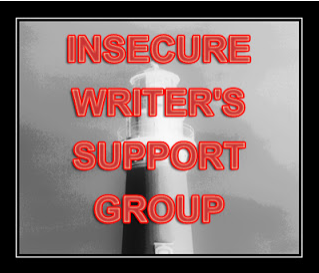Crushing Writer’s Block (#IWSG)
 It happens to every writer, no matter their level of craft. Whether you’re a Level 1 noob learning to string compelling sentences together about the Secret War Of The Bunnies and The One Carrot, or a level 20 Grand Master Poobah With Pointy Hat, we all get stuck from time to time. A writer who doesn’t is either probably doing it wrong or is about due for a big Karma Anvil over the head.
It happens to every writer, no matter their level of craft. Whether you’re a Level 1 noob learning to string compelling sentences together about the Secret War Of The Bunnies and The One Carrot, or a level 20 Grand Master Poobah With Pointy Hat, we all get stuck from time to time. A writer who doesn’t is either probably doing it wrong or is about due for a big Karma Anvil over the head.
I’ve said it before and I’ll say it again: The craft of writing is hard, yo. It’s a wicked balance of character and plot to make Story, of planning versus creative highjinkery. Writing is like wine-making. There’s limited ways to make good wine, but a wild creative mixture of flavor and balance to be had. What makes good wine good is that it’s structured and balanced properly. Also, the process is long-drawn out and, frankly, agonizing at times.
What separates men from the Cheez Whiz, however (besides a handy crowbar), is how they handle getting stuck. Do they give up and decide it’s just too damn hard? Do they muscle through it? Or do they fall back on craft to get them past even the stickiest of wickets? Writer’s Block isn’t necessarily the sign of a bad writer–or even a bad story. It’s a symptom of something going clang or flapping loose in the story engine. Something that needs to be fixed. It’s the subsoncious storyteller (aka the Divine Muse) waving a flag, trying to get our attention.
When I was a teenage Writer Monkey, my parents sent me to a couple of different martial arts classes. My stepdad spent his formative years in Japan, so martial arts and oriental food (some good, some bad, some VERY VERY UGLY) figured much in my upbringing. I took both Tae Kwon Do and, later, Aikido. I was getting to about dating age, so self-defense was a must. In Tae Kwon Do, there were those ninja-like students who could crush through cement blocks and stacks of wood. The key to such Ninja Sooper Skillz, I observed, was a lethal intensity of focus, and a foundation of craft.
 Here are some of the ways I attack Writer’s Block when it tries to ambush me from a dark alley:
Here are some of the ways I attack Writer’s Block when it tries to ambush me from a dark alley:
Spinning Down The Page
This is a favorite go-to. First, I’ll review my story to try to pinpoint where, exactly, it started to go wrong. If that fails, I’ll start at the previous scene, section, chapter, or plot point milestone. In short-line snippets of action, image, and dialogue, I’ll start summarizing “beats” of the story from that point, writing fast down the page, leaving lots of white space. It’s half-summary, half-brainstorming wave. One of two things will have happened by the time I reach the sticky wicket. An “Aha!” moment will present itself, and I can continue spinning like a loose Ferris Wheel, crushing innocent bystanders, to integrate the solution and a good portion of story afterwards for good measure. Or, my brain won’t kick up a solution, per se, but I can spin to the point where I got stuck, jump to the next thing I know has to happen, and work my way around the issue with action/image/dialogue snippets until I find the center–the “Aha!” I’ve been searching for.
Elements, Dear Watson!
Every scene or chapter has certain baseline components in common. They all have a beginning, middle, or end. They also all have Setting, Action, and Dialogue. What is the purpose of this scene/chapter? What MUST happen, above all else? And, WHERE does it happen? Is it the first scene of a chapter? If it’s a scene, what’s that scene’s place within the story or chapter? What happens before or after? Can I extrapolate what’s missing from the information I have? I’m often still writing “beats” here–because beats have rhythm, and once started, are hard put to stop.
For a scene I’m having trouble with, I break it down into components and do a timed writing exercise. I’ll start with 10-15 minutes describing setting–time of day, weather, sensory elements. This helps ground me in the scene. Once I can taste, touch, and smell, I move on to sight and sound. I’ll spend 10-15 minutes describing action and image, as though it were a movie unfolding in my mind, all sight stuff. Finally, I’ll do 10-15 minutes on dialogue, just conversation, perhaps a few emotional “tells”. Line after line. This tags me into character.
What Do You Know?
When Writer’s Block crashes down on innocent Writer Monkeys, there’s a lot said Writer Monkeys don’t know, hence the Block. So I write down everything I do know–about character, about setting, about plot and story arc. I write down what has to happen, and why. I’ll continue to probe, asking questions, answering them, asking more questions, answering those. By making a list of all this, I’m pushing to fill in the blanks. I’ll even go so far as to write fill-in-the-blank statements, if necessary. “So-and-so does ____ because of Motivation A.”
Whatever your methods, the point is to push, to narrow focus–but not to force the blockage. The point is to cleave through with pinpoint accuracy, and crush that block.





